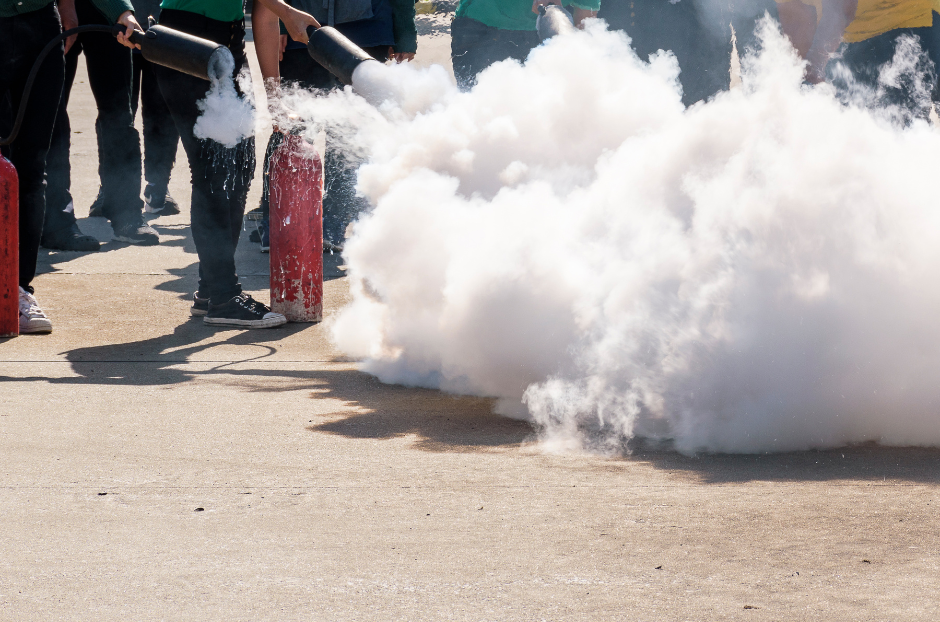Fire safety in high-risk manufacturing operations, such as chemical plants, oil refineries, and heavy industrial facilities, is significant due to the fire hazards associated with their use of flammable substances and complex machinery. In South Africa, compliance with stringent safety standards and effective fire prevention measures is essential to safeguard lives, protect assets, and ensure business continuity. This article examines key considerations for fire safety in high-risk manufacturing environments, focusing on regulatory requirements, best practices, and modern technologies.
Understanding the Risks
Manufacturing facilities often handle materials and processes that significantly elevate fire risks. These include:
- Flammable Chemicals and Fuels: Industries like petroleum and plastics manufacturing involve substances that ignite easily, increasing fire hazards.
- High-Temperature Operations: Activities such as welding, smelting, or drying generate heat that can spark fires if not controlled properly.
- Electrical Systems: Overloaded circuits or faulty wiring in machinery pose a significant ignition risk.
- Dust Explosions: In industries processing fine particles, like wood or metal, accumulated dust can lead to catastrophic explosions.
Understanding these risks is the first step in designing comprehensive fire safety strategies.
Regulatory Framework for Fire Safety in South Africa
South Africa’s fire safety standards are guided by the National Building Regulations (NBR), the Occupational Health and Safety Act (OHSA), and SANS standards. For manufacturing operations, compliance with these regulations involves:
- Fire Suppression Systems: Installation of automatic sprinkler systems or gas-based suppression for areas with sensitive equipment.
- Evacuation Plans: Clear routes and assembly points to ensure safe evacuation during emergencies.
- Periodic Inspections: Regular maintenance of firefighting equipment, including extinguishers, hydrants, and alarms, to ensure functionality.
Non-compliance can result in fines, legal liabilities, and increased risks of fatalities and property loss.
Key Components of Effective Fire Safety Plans
Risk Assessment
Conducting detailed risk assessments is crucial. This involves identifying fire hazards, evaluating their likelihood, and planning appropriate mitigation strategies. For instance, factories using chemicals must address the risk of spills leading to fires
Fire Detection Systems
Advanced detection systems, including heat and smoke detectors, should be installed. These systems provide early warnings, allowing personnel to respond swiftly.
Active Fire Suppression
Manufacturing facilities should deploy systems suited to their specific risks. For example:
-
- Sprinklers: Effective for controlling fires in large spaces.
- Gas Suppression Systems: Ideal for areas housing sensitive equipment, such as server rooms or control panels
Firefighting Equipment
Strategically placed extinguishers, fire hoses, and hydrants are critical. Regular inspections and servicing ensure that equipment functions during emergencies.
Employee Training
Workers should be trained to use firefighting equipment and follow evacuation protocols. Mock drills enhance preparedness and identify gaps in plans.
Ventilation and Smoke Control
Proper ventilation reduces smoke accumulation, allowing safer evacuations. Smoke extraction systems should be part of the facility’s design.
.
Innovative Technologies Enhancing Fire Safety
- IoT-Enabled Sensors Internet of Things (IoT) sensors detect abnormal temperature, gas leaks, or smoke levels, providing real-time alerts to safety teams.
- Automatic Fire Suppression Systems like mist-based extinguishers provide precise, localised fire control with minimal damage to machinery.
- AI-Based Monitoring Artificial intelligence tools analyse patterns in operational data to predict and prevent potential fire incidents.
- Thermal Imaging Cameras These devices identify overheating components, enabling pre-emptive maintenance to avoid fire hazards.
Case Study: Lessons from Global Incidents
International incidents highlight the critical importance of robust fire safety measures. In 2005, a refinery explosion in Texas was identified as being as a result of long term safety deficiencies and inadequate safety protocols. Similarly, a fire at a South African oil refinery in 2020 emphasised the need for proactive maintenance and emergency preparedness.
Best Practices for South African Manufacturers
- Customised Fire Safety Plans Tailor strategies to specific risks associated with the materials and processes used in your facility.
- Regular Drills Schedule evacuation drills quarterly to ensure all employees know their roles in emergencies.
- Engage Experts Work with certified fire safety consultants to design, implement, and audit fire prevention measures.
- Maintenance Schedules Ensure regular servicing of all fire safety systems, adhering to manufacturer recommendations and regulatory requirements.
The Role of Professional Fire Safety Services
Companies like Firebrand Group specialise in providing comprehensive fire safety solutions. Their services include:
- Conducting risk assessments tailored to high-risk industries.
- Designing and installing advanced fire suppression and smoke control systems.
- Providing compliance audits and certifications.
- Offering training programs to enhance employee readiness
By leveraging such expertise, manufacturing facilities can achieve higher safety standards while minimising operational risks.
Fire safety in high-risk manufacturing operations is both a legal obligation and a moral responsibility. By understanding the risks, adhering to regulations, and implementing best practices, South African manufacturers can protect their workforce, assets, and reputation. The adoption of modern technologies and partnerships with professional safety firms further strengthens this commitment to safety.
Proactive planning and continuous improvement in fire safety measures not only prevent incidents but also ensure a sustainable and resilient manufacturing sector in South Africa.
Firebrand Group
Fire Brand Group (FBG) is one of South Africa’s leading fire protection companies, established in 2014 with the mission of providing comprehensive fire safety solutions. Our goal is to mitigate and eliminate the potential risks of fire by safeguarding the lives of building occupants, protecting clients’ assets from significant damage, and minimizing the environmental impact of toxic smoke and emissions.
FBG offers high-quality, cost-effective, and integrated fire protection systems. Our approach allows customers to focus on their strategic objectives while relying on the expertise and dedication of our specialized fire systems service providers and firefighting professionals. We further support our clients with customized Service Level Agreements, ensuring high-quality services tailored to specific requirements.
Our services range from conducting Risk Assessment Surveys to the design, supply, and installation of a wide variety of Fire Protection Systems and Equipment. This comprehensive service offering positions us as a trusted leader in fire protection across South Africa. We also provide on-site and off-site training to ensure that our clients and their staff understand the risks and know how to manage them effectively.
In addition to fire risk mitigation, we prioritize the health and safety of personnel in the workplace, as well as the potential environmental impact of any incidents. Our goal is to eliminate risks associated with people and the environments in which they work.





